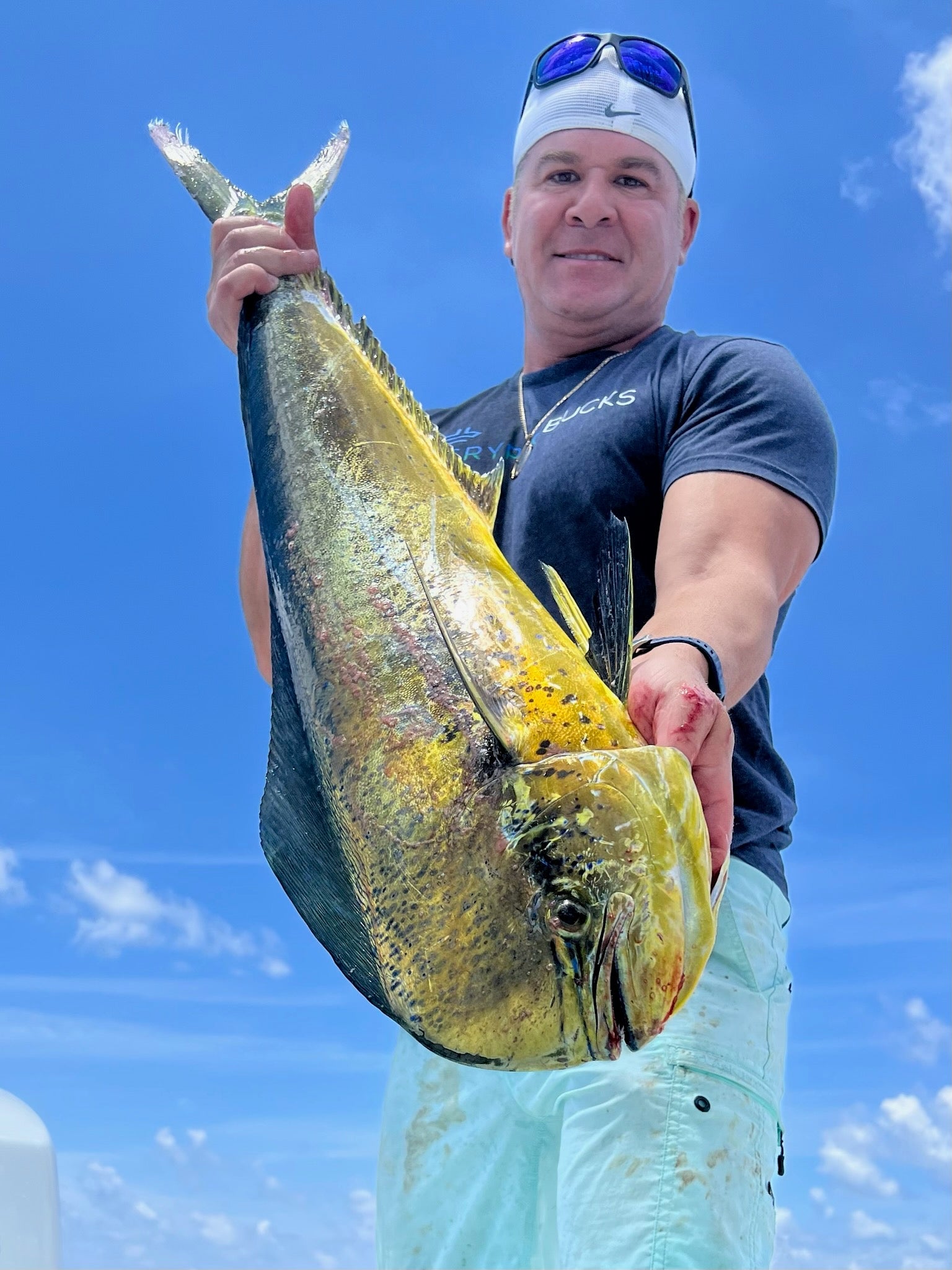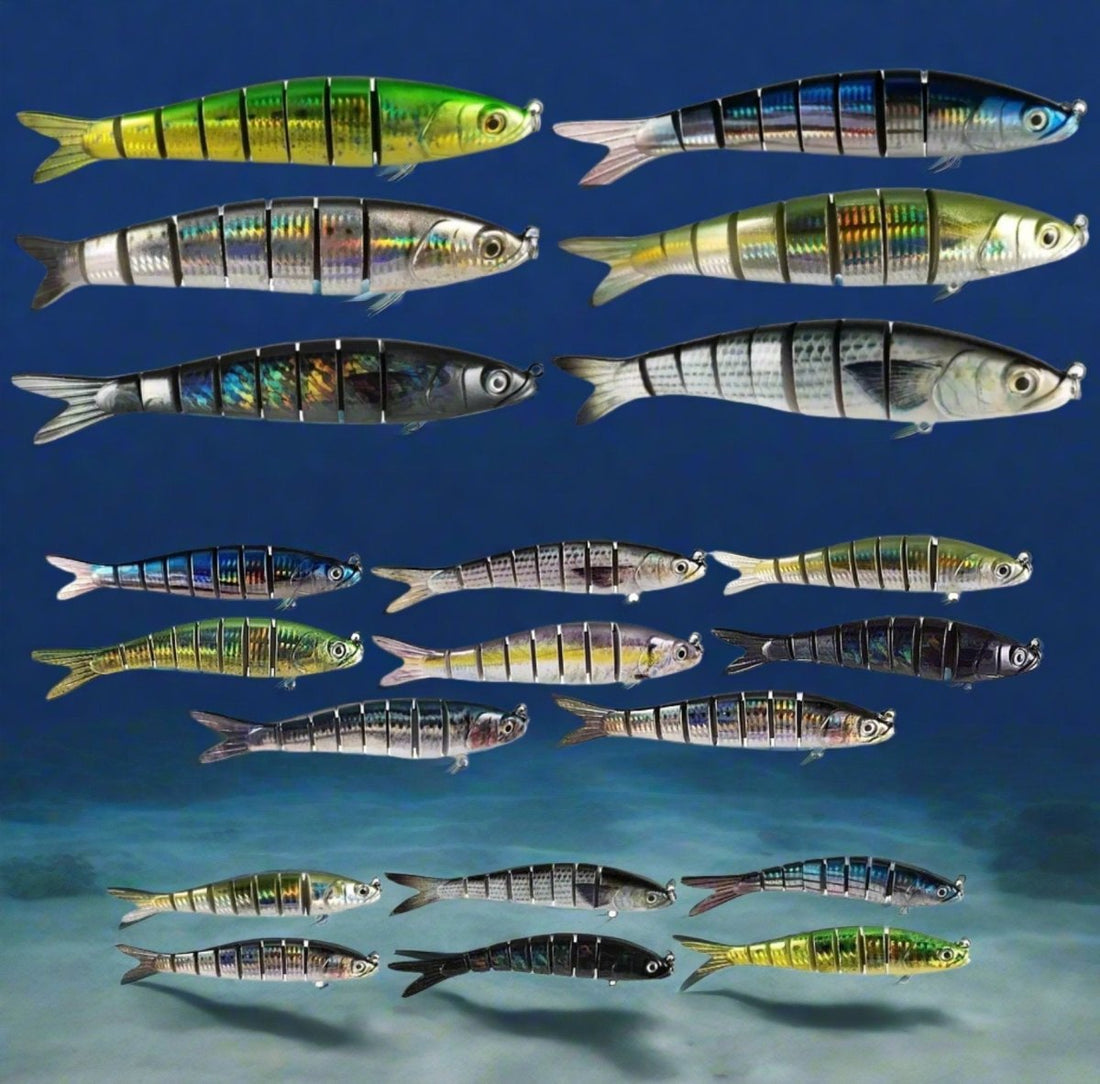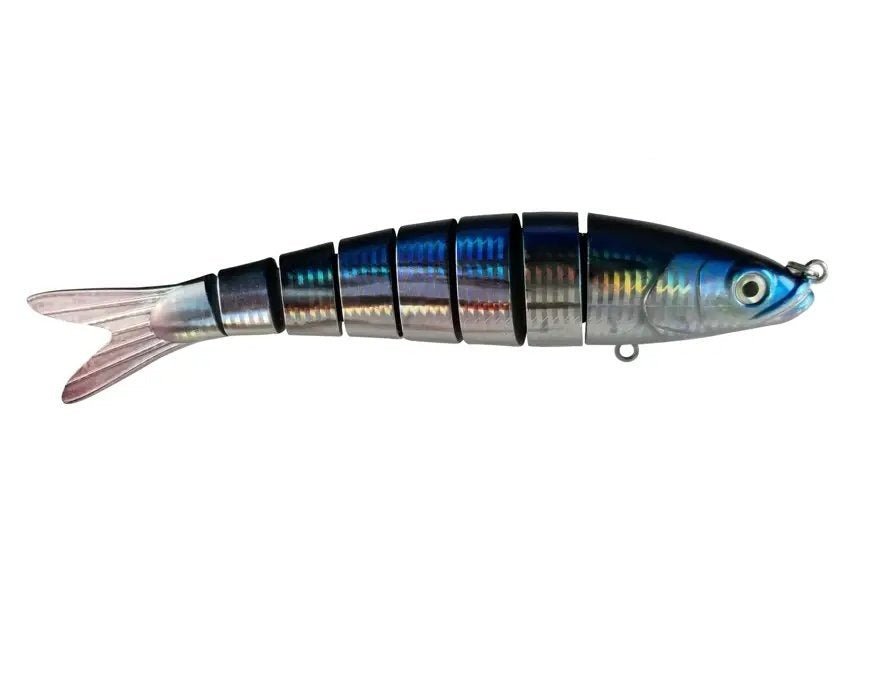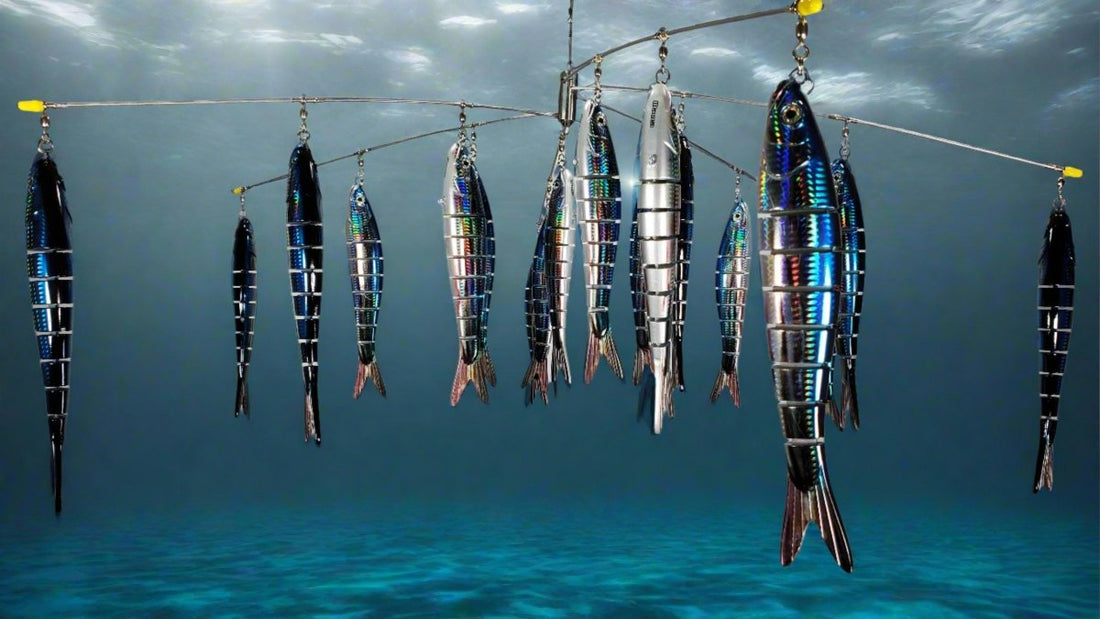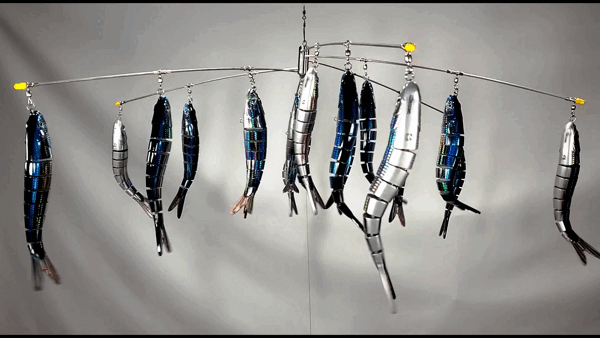Crush MORE Mahi Mahi using Dredges
Mahi-mahi, also known as dolphinfish or dorado, are among the most sought-after game fish in the world, prized for their speed, acrobatics, and excellent table fare. These pelagic predators are found in tropical and subtropical waters worldwide, and they are commonly encountered by anglers trolling offshore with artificial lures. We are talking about a fish that can reach weight of over 40lbs in less than 6 months due to an insatiable appetite. A ray finned species, dolphin exhibit a single long based dorsal fin that extends from the head to the tail. Males, known as bulls, show prominent foreheads projecting out well above the body while females have a rounded head.

Dorado travel fast to keep up with the abundance of forage cruising the Gulf Stream current. Flying fish, Goggle Eye, Ballyhoo, Spanish Sardine, and Mullet are but a few of the baitfish that can become quick meals for these colorful pelagics. Monster Mahi are found cruising the current rips and edges of any temperature break out in the blue waters of the Atlantic. The species is quickly identified in the open as their electric coloration is the first thing any anglers notices when they are raised up to a dredge.
Lines of weed or sargassum build up along current rips and provide the ideal habitat to local a pack of hungry dolphin. The sargassum provides a very healthy ecosystem for smaller baitfish and a variety of other marine life. Dolphin lurk in the depths waiting to ambush any baitfish straying too far from the shelter of these weed mats which at times can be the length of a football field.
One tactic that has proven particularly effective for targeting mahi-mahi is the use of high-quality dredges featuring artificial lures with natural baitfish patterns. In this article, we'll explore the benefits of this approach and provide tips for using it effectively.
The Benefits of High-Quality Dredges

A dredge is essentially a spread of multiple artificial lures, often rigged in a way that mimics a school of baitfish. The goal of a dredge is to create the illusion of a large, active school of prey, which can entice mahi-mahi to strike.
The benefits of using a high-quality dredge for targeting mahi-mahi are numerous:
-
Increased Attractiveness
One of the primary benefits of a dredge is that it significantly increases the attractiveness of your trolling spread. By presenting multiple lures in a way that mimics a school of baitfish, a dredge can make your spread look much more enticing to passing mahi-mahi.
-
Improved Visibility
Another key advantage of a dredge is that it can improve the visibility of your trolling spread. By positioning multiple lures at different depths and angles, a dredge can create a more visible, three-dimensional target that is easier for mahi-mahi to detect from a distance.
-
More Strikes
Ultimately, the goal of using a dredge is to increase the number of strikes you get from mahi-mahi. By presenting a more attractive, visible target, a dredge can entice more strikes and increase your chances of hooking up with these elusive game fish.

Creating your own baitfish ball, also known as a "bait ball" behind the boat would be the ideal strategy to raise the larger dolphin lurking below and deploying a properly presented dredge will only get any nearby Mahi frenzied up!
In scenarios like this is, deploying a dredge system that matches the profile and colors of the bait in the area will only help maximize how much Mahi you put in the box. Dredges can be rigged in variety of sizes, shapes, and colors. They can have fixed or collapsible arms that aid in the ease of storage. Whichever way you decide to go, just make sure the materials, baits, and components used are ready to withstand several mahi strikes.
Mahi Mahi are aggressive by nature and when in the area will happily rise up to attack a correctly presented dredge. When it comes to selecting the correct dredge spread to attracting and maximizing a hot Mahi bite, be sure to deploy baits that match the baitfish in the area. For example, here in Florida and the Bahamas you can't go wrong picking a flying fish or juvenile mahi pattern as they are both primary forage for mature dorado. Blue and white along with electric green & yellow really provide excellent contrast in clean blue water. The cleaner the water the more flash your baits should also have, as this flash magnifies through the water column to attract the larger gamefish lurking below.
Sticking to a 5 - 7" baitfish profile is a good rule of thumb as this size footprint is needed to generate the right amount of flash, vibration, and disturbance to ring the dinner bell. Utilizing multiple drops per arm of the dredge will add more weight the dredge but also create the appearance of a densely packed bait ball. A dredge with a diameter of at least 3 ft, will typically have 3 - 5 drops per arm. The drop is the location on the arm of the dredge where the baits are connected, usually with a crimp sleeve swivel.
When rigging the dredge, evenly spacing out the baits to minimize wear and maximize performance is a must. This will also help create a tightly formed baitball which is what will help raise the larger mahi below. When it comes to selecting natural baits over artificial, seasoned offshore skippers will run a mix of both. Some prefer an all natural mullet dredge as this is a standard producer. Natural baits provide the natural sense of smell and swimming action when properly rigged, but will also wash out after each use. Artificial baits come a variety of styles and shine when it comes to durability and creating "the ruckus" to bring up the big boys.

Deploying anywhere from a 4 - 6lb fish style lead weight rigged on 400lb stranded cable or hard mono in front of the dredge should help keep your single, double, or triple tier dredge tracking right. It's always a good idea to have a few weights on deck so you can adjust to the sea conditions quickly and optimize the way the dredge tracks through the water. Always try to use the least amount of weight possible in front of the dredge and use only what's needed to get the dredge swimming correctly.

If you're ready to take on more mahi action and stay connected with a steady flow gaffers headed for the box, then making dredge deployments part of your spread may be the answer. Keeping a keen eye out for the abundant bait in the area and shaping your dredge to replicate that forage swimming in a bait ball will increase your chances of success. The valuable time spent deploying and retrieving your dredges will become more natural with time and quickly turn into a finely tuned offshore fishing orchestra. Remember that practice makes perfect and fine tuning the dredges with an able and willing crew will help keep those fish boxes filled.
Dredge on!


